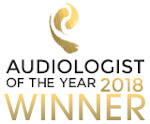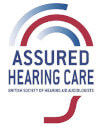Auditory Processing Disorder (APD) Test
Services

PLEASE NOTE THAT BEFORE CARRYING OUT AN AUDITORY PROCESSING DISORDER ASSESSMENT YOU WILL NEED TO FIRST ATTEND FOR A FULL DIAGNOSTIC HEARING ASSESSMENT TO RULE OUT HEARING LOSS AND OTHER CAUSES OF LISTENING DIFFICULTIES.
AUDITORY PROCESSING DISORDER (APD)
Even when a child has normal hearing, they may still face challenges with listening and processing information. This is referred to as auditory processing difficulties/disorder (APD). APD can affect a child’s ability to learn, follow directions, read, engage in conversation, and reach their full potential.
Common signs include:
- Struggles to hear in background noise
- Mishears or misunderstands what is being said
- Cannot remember longer instructions
- Difficulty concentrating unless it is very quiet in the room
- Difficulty understanding accents and cannot follow fast speech
- Often daydreams
- Becomes unsettled at school
- Dislikes speaking on the phone
The NHS estimates that as many as one in 20 children may have some degree of auditory processing difficulty. Once diagnosed, APD can be managed through auditory training, remote microphone systems, classroom accommodations, additional support, and other strategies.
PLEASE NOTE THAT BEFORE CARRYING OUT AN APD DIAGNOSTIC ASSESSMENT YOU WILL NEED TO FIRST ATTEND FOR A FULL DIAGNOSTIC HEARING ASSESSMENT TO RULE OUT HEARING LOSS AND OTHER CAUSES OF LISTENING DIFFICULTIES.
Summary of auditory processing and tests used to diagnose APD
Binaural Interaction: LiSN S test
Auditory Closure: CID W 22 wordlists in quiet & with ipsilateral noise
Dichotic listening:
- Dichotic Digits Test
- Staggered Spondee Word Test
- Competing Sentences Test
Phonemic Synthesis test
Temporal Processing:
- Pitch Pattern Test (temporal patterning)
- Random Gap Detection Test (temporal resolution)
Binaural Interaction
Binaural interaction refers to the auditory system’s ability to interpret and merge the signals from both ears. Binaural interaction allows us to:
- hear in background noise
- work out where a sound is coming from
Children with poor binaural interaction will struggle to pick out a teacher’s voice from the other sounds in the classroom and to track the teacher’s voice as it moves around. If a student has been looking down to take notes, they may take some time to find and focus on the teacher’s voice again. As a result, they may miss instructions or information.
LiSN Testing:
LiSN-S is an adaptive, virtual reality speech test that measures speech perception ability in noisy environments. Importantly, it measures the ability of children to use the spatial cues that help differentiate a person speaking from distracting speech sounds. An inability to use this information has been found to be a leading cause of difficulty understanding speech in noisy environments, such as the classroom.
Auditory Closure
Auditory closure plays an important role in everyday listening because it relates to our ability to fill in missing or distorted portions of the auditory signal so that the whole message can be correctly interpreted. Almost all listening occurs with some level of background noise. For example, the sound of air conditioning or children playing outside may be present while the teacher is speaking. Also, if a student is sitting at a table with a fidgety student, then the sounds from fidgeting may partially mask or obscure what the teacher is saying.
A student with good auditory closure will be able to fill in the missing or masked parts of the speech and follow what the teacher is saying. A student with poor auditory closure will not fill in these gaps and may struggle to make sense of what is being taught. If the topic of discussion is familiar to the child then they may use their existing knowledge to help fill in the gaps, however if there is no pre-existing knowledge then the child may quickly lose the thread of what is being taught which may impact their learning.
Dichotic Listening
Dichotic listening refers to auditory stimuli that are presented to both ears at the same time but when the stimulus being presented to each ear is different. The auditory system has to process different signals in each ear at the same time and merge them – a process called auditory integration. An example scenario is a lively debate where speech is coming from different sides and will be overlapping.
In some situations, the student will have to ignore the signal being delivered to one ear while focusing on the signal being presented to the other ear. This is called binaural separation and it is vital to everyday listening, particularly in a classroom. The student may have to ignore speech from one source (chatter between the students) while focusing on the teacher’s voice.
Dichotic Digits: (Binaural Integration)
In this test 2 digits are played simultaneously into each ear. The child has to repeat back all 4 digits heard.
Staggered Spondiac Word List (SSW)
The Staggered Spondee Word (SSW) test is a dichotic listening test used in the evaluation of auditory perceptual abilities in children. Two words are played into the ears at the same time. The child has to repeat back both words heard.
Competing Sentence Test (Binaural Separation)
Two sentences are played into the ears at the same time. One sentence per ear. In the first half of the test, the child has to ignore the sentence being presented to the left ear and repeat the sentence being presented to the right ear. The second half of the test requires the child to ignore the sentence presented to the right ear and repeat the sentence being presented to the left ear.
Temporal Processing, Temporal Patterning and Temporal Resolution
Temporal refers to timing-related aspects involved in hearing.
Temporal processing underpins our ability to process speech and music. For example, within the word “cat” /c/ is heard first, /a/ is heard second, and /t/ is heard last. The timing of the auditory signal and the order of sounds needs to be preserved if we are to correctly hear the difference between similar words.
Temporal patterning refers to a person’s ability to follow the contours of speech – the intonation, rhythm and stress.
- Intonation enables us to hear the difference between a question (upward intonation) and a statement (downward intonation). It also enables us to interpret the emotion of what is being said and helps us understand if the talker is expressing excitement, sadness, anger, sarcasm, or happiness.
- Rhythm can alter the meaning of the sentence, for example, “Look out! The window!” versus “Look out the window!”
- Stress enables us to hear the difference between similar words such as convict (noun) versus convict (verb). Also, being able to follow the differences in stressed words allows the listener to extract the key words within a sentence.
In summary temporal patterning and processing provides an enormous amount of information that cannot be obtained from the words alone.
Temporal resolution refers to the ability to preserve rapid changes in sounds/words/music over time. This is important for speech recognition, particularly in the presence of background noise.
PITCH PATTERN TEST (PPT) Temporal Patterning
The PPT is a temporal ordering task that measures the ability to perceive and recognise tonal patterns. It looks at a person’s ability to hear and perceive small changes in sounds over time. The PPT test requires the child to listen to, identify and name the pattern of three tones/notes played to each ear. There is a high-pitched note and a low-pitched note and these notes are arranged in a sequence of three (e.g. high-low-low or low-low-high or high-low-high etc).
For ages 8 and older.
Random Gap Detection Test (RGDT): Temporal Resolution
The Random Gap Detection Test looks at resolution within the auditory system and presents two clicks or two tones with a short gap in between. If the gap is very short, the two clicks/tones can be heard as one sound. As the gap between the clicks/tones gets longer, the clicks/tones are heard as two separate sequential sounds. The child must identify if they heard one or two clicks/tones. The threshold at which the gap is sufficiently wide to be heard as two sounds is referred to as the gap detection threshold.’ Research on speech perception indicates that people should be able to hear transitions of formant frequencies of speech in the 0 to 20 millisecond range. The assumption is that gap detection thresholds greater than 20 milliseconds are abnormal and a temporal (timing) processing disorder may be present.












